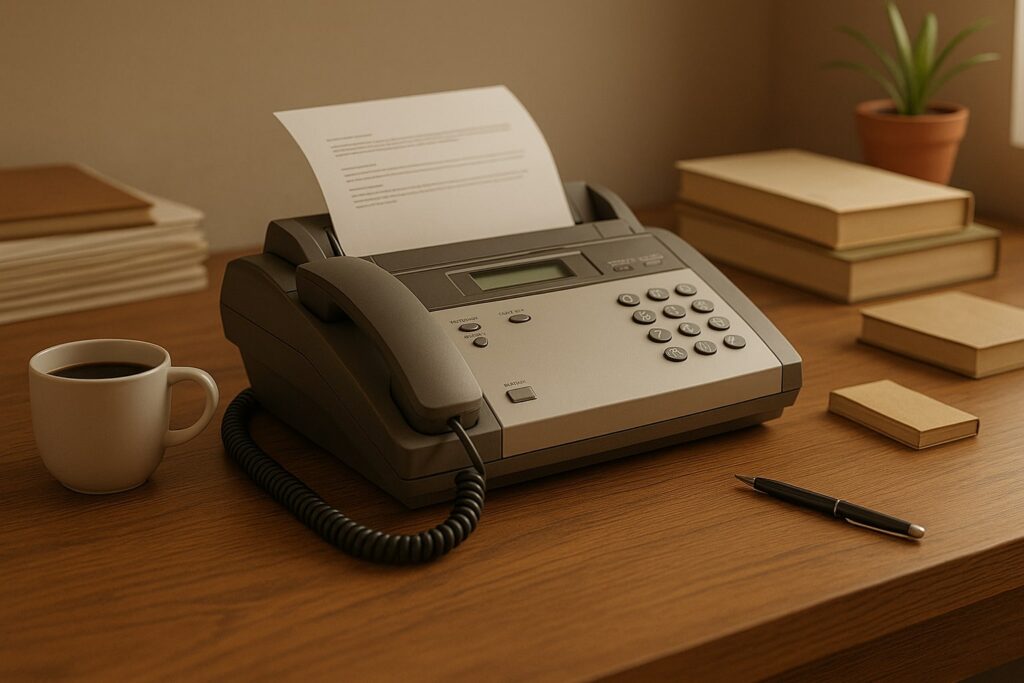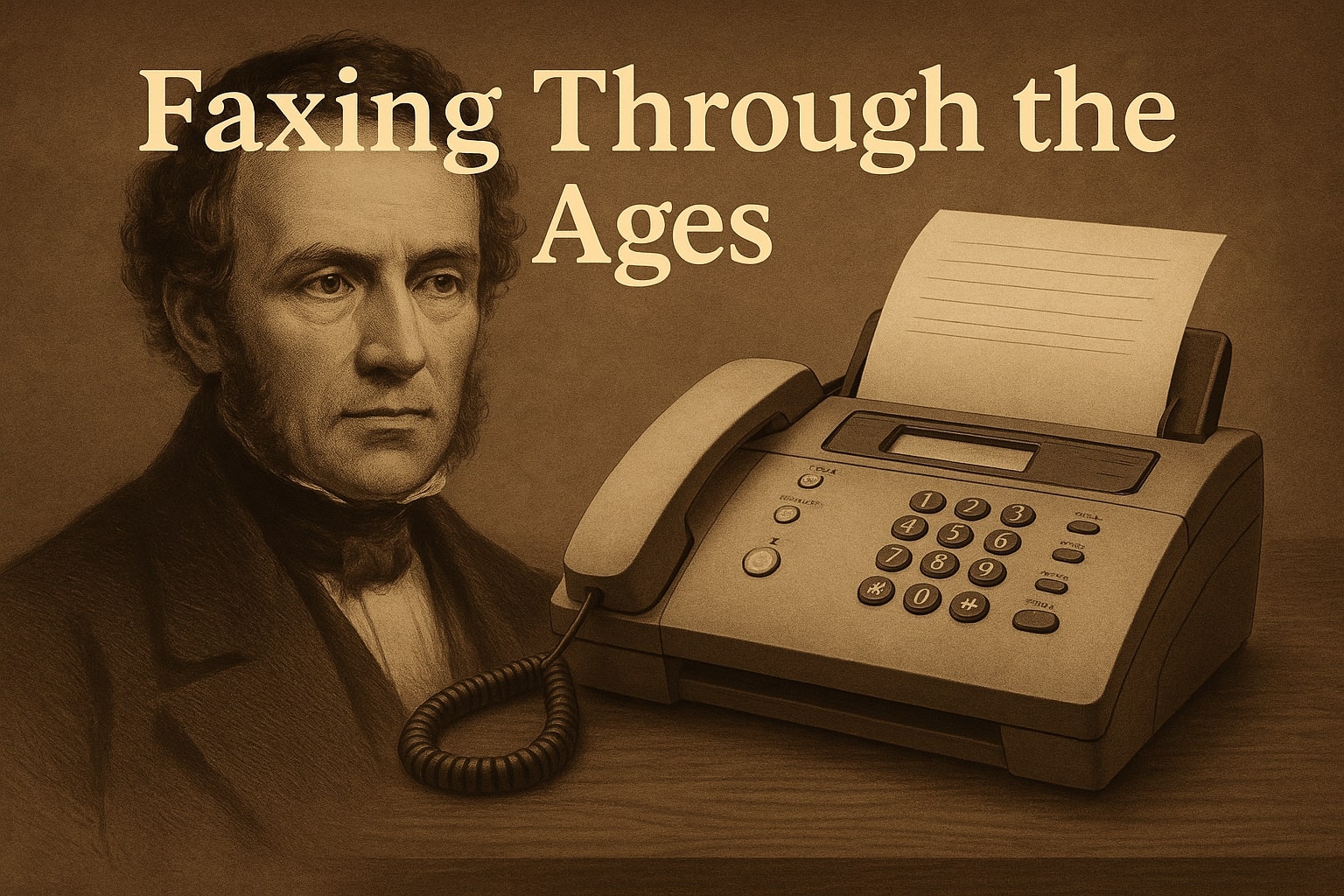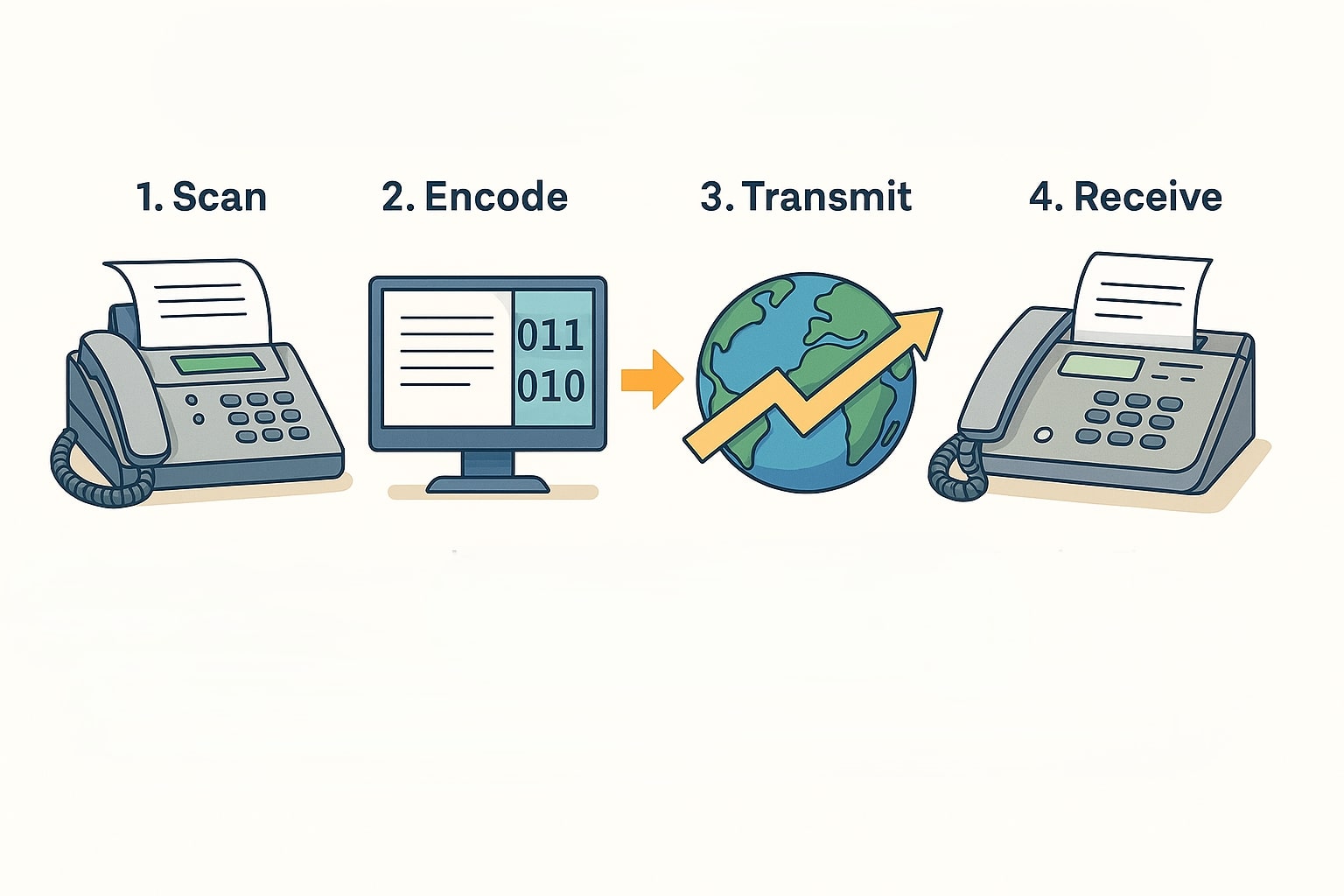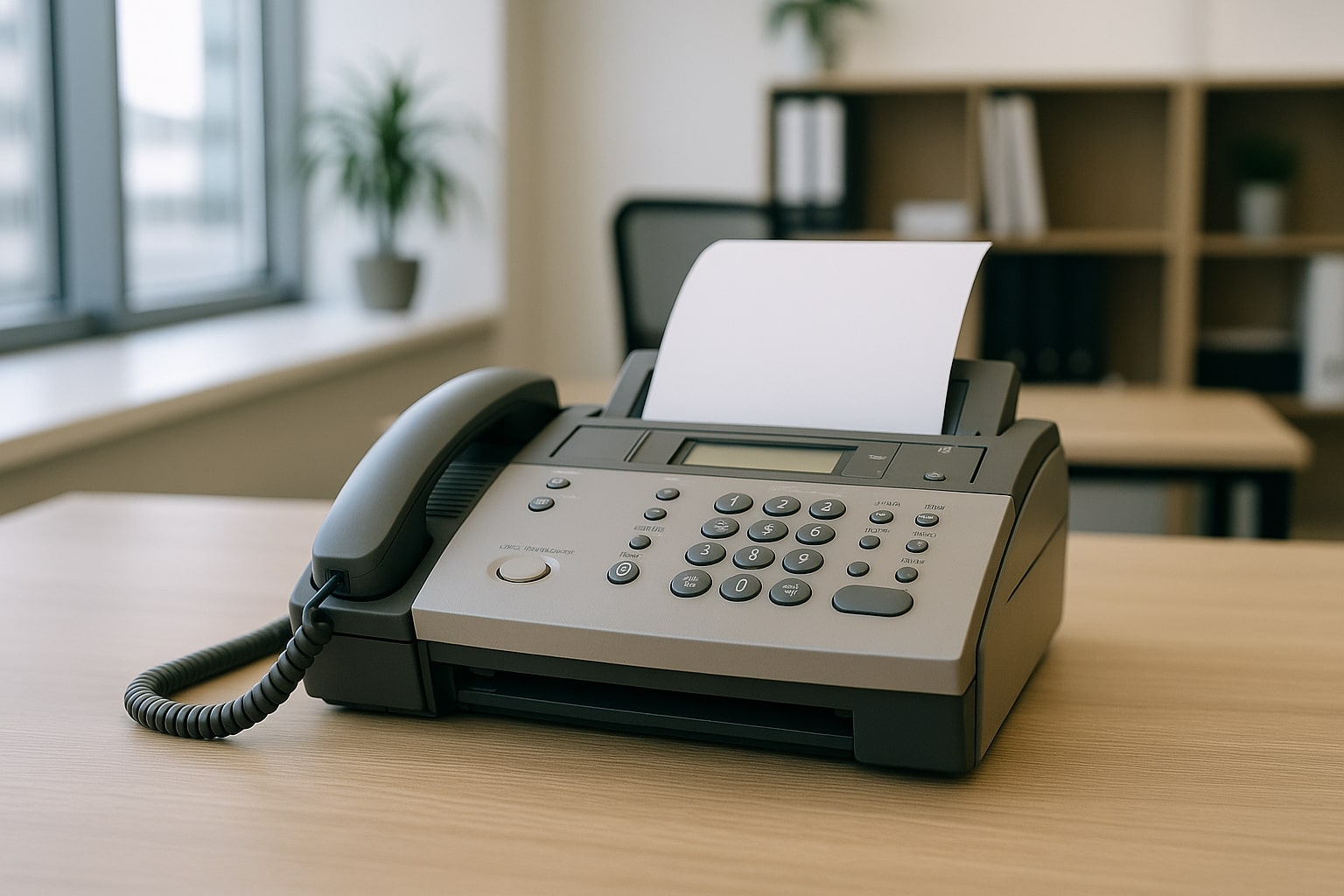
Before email and instant messaging, faxing was one of the fastest ways to share contracts, letters, and reports between offices. Businesses relied on it for decades to send copies of documents across cities, states, and even countries.
Fax machines first gained traction in the 1970s and quickly became a standard fixture in offices. By the 1980s and 1990s, they were everywhere and used daily in banking, healthcare, education, and government.
Even though digital tools now dominate most forms of communication, faxing remains relevant in sectors that depend on fast, direct document transmission.
This guide explains what faxing means today, how it works, and how digital options have reshaped the process. We’ll also look at how modern businesses use faxing and why it hasn’t gone extinct in an era of cloud storage and messaging apps.
What Is Faxing?
Faxing means sending an exact copy of a document electronically, usually from one device to another. It started with physical fax machines that used telephone lines, but today you can also fax using a mobile app, email, or web platform. The core idea hasn’t changed; faxing sends a replica of the original document, including images, handwriting, or typed text.
The Evolution of Fax Technology

Faxing didn’t start with offices and phone lines; it began with experiments in sending images through wires. Here’s a quick look at how the technology evolved over time:
- 1843 – Alexander Bain patents the first fax-like device. It used pendulums, metal styluses, and chemically treated paper to copy images over wires.
- 1865 – Giovanni Caselli’s Pantelegraph becomes the first commercial fax service. It sends handwritten notes between Paris and Lyon using telegraph lines.
- 1900s–1920s – Scientists develop methods for sending photographs, fingerprints, and maps. Faxing begins to serve media and government agencies.
- 1930s–1940s – Radiofax takes over. Ships, military units, and weather services start using short-wave radios to send updates and charts.
- 1964 – Xerox introduces Long-Distance Xerography (LDX) —a landmark office fax system. It sends letter-size pages using phone lines.
- 1966 – The Magnafax Telecopier arrives. It’s smaller, faster, and more office-friendly, helping faxing become a business standard.
- 1980 – The G3 (Group 3) standard is approved. Fax machines from different brands can now communicate, and one-page faxes take about one minute.
- 1990s – Fax machines are everywhere, on every desk in law offices, clinics, banks, and real estate firms.
- 2000s – Digital faxing takes over. Internet fax services and email-based solutions replace landlines and bulky machines.
- Today – Cloud-based faxing is the norm. You can send and receive faxes from your phone, email, or a web portal.
How Fax Technology Works

Faxing works by scanning a document, turning that information into a digital signal, and sending it to another device that decodes and prints or displays the copy. The process sounds complex, but it’s based on a simple chain of steps: scan, encode, transmit, receive, decode.
Here’s how it works with a traditional fax machine:
- Scan:: You place the document into the machine. It uses sensors to scan the page line by line, converting it into a bitmap image, a digital snapshot of the page.
- Encode:: The image is compressed using a fax-specific format (often Modified Huffman coding) to shrink the file size. This makes it easier and faster to send over phone lines.
- Dial and Transmit:: The machine dials the receiving number. Once a connection is made, it sends the encoded data over analog telephone lines.
- Receive and Decode:: The receiving machine answers the call, receives the data, and decompresses it.
- Print:: It prints a copy of the original document. What comes out isn’t a new version; it’s an exact replica of what was scanned.
And here’s how it works with digital faxing:
- Upload or Scan:: You either upload a digital file (like a PDF) or scan a paper document using a phone camera or scanner.
- Digital Encoding:: Instead of phone lines, your document is processed through a web or app-based fax service, which handles compression and formatting on the backend.
- Delivery via Cloud or Email:: The fax is sent through cloud servers and delivered as a digital attachment to a fax number or email address.
- Real-Time Notifications:: You’ll typically get a push notification or email once the fax is sent or received.
Although the overall system has changed, the core logic, converting a document into a transferable image, has stayed the same.
Types of Fax Machines

Some common types of fax machines include:
- Thermal Fax Machines: Use heat to transfer text onto special thermal paper. They’re simple and low-cost, but the paper fades over time and can’t be stored long-term.
- Inkjet Fax Machines: Print using ink cartridges, just like a standard printer. They create clearer documents, but ink refills can get pricey.
- Laser Fax Machines: The sharpest quality option, using toner for fast, high-volume output. More expensive upfront, but better suited for offices that fax regularly.
Multifunction Devices (MFDs): All-in-one machines that can print, scan, copy, and fax. These are still used in some workplaces that prefer handling paper directly.
Common Ways to Fax Today
Faxing has adapted to fit modern routines. You can now manage everything from your device, that is, sending and receiving documents without touching a physical machine.
Here are the most common ways people fax today:
- Fax Machine – Load your paper document, dial the number, and press send. The other machine receives it and prints it out automatically.
- Mobile Fax App – Use an app like FaxBurner to scan or upload a document, enter a fax number, and send it instantly. You’ll receive faxes as PDFs in the app.
- Email-to-Fax – Attach your document to an email and send it to a designated fax address. Incoming faxes show up in your inbox as attachments.
- Web-Based Fax Service – Upload your file in a browser, enter the fax number, and click send. Your account or email will receive incoming faxes.
Cloud Storage Integration – Send files straight from Dropbox, Google Drive, or similar platforms. Some services can also route incoming faxes to your cloud folder.
For step-by-step instructions, see our guides on how to send a fax and how to receive a fax.
Fax Confirmation and Error Reports
After you send a fax, the machine or service usually generates a confirmation to let you know how it went. This helps you track what was sent, how many pages went through, and whether the delivery succeeded.
Traditional Fax Reports
Most fax machines print a confirmation slip, often a narrow thermal strip called a Transmission Verification Report (TVR), right after the pages go through. It usually shows:
- Date and time of the fax
- Number of pages sent
- Duration of transmission
- Recipient’s number
- Status: “OK,” “Sent,” or an error message
If something went wrong, the report may show: - “Busy” – The recipient’s line is in use
- “No Answer” – The call wasn’t picked up by another machine
- “Error 344” – Connection was lost mid-transmission
- “Error 232” – No response after sending part of the document
-
“Error 402” – Paper jam or scanner issue on your side
Each machine model has its own codes, so it’s helpful to keep the manual nearby or look up error explanations online.Digital Faxing: Real-Time Updates
Online fax services give you quicker and more detailed feedback: - Email Confirmations – You get a message in your inbox once the fax is delivered (or fails).
- App Notifications – Instant alerts let you know when a fax is sent, received, or if there’s a problem.
-
Delivery Receipts – Some platforms provide a digital timestamp and page count, which is helpful for records or legal documents.
The Role of Fax in Modern Industries
Many industries still rely on faxing to move documents quickly, keep records, and stay compliant with internal or legal standards. Even with newer tech available, faxing continues to support daily operations in sectors that need fast, trackable document exchange.
Some of these industries include: - Healthcare – For patient referrals, prescriptions, and medical records
- Legal – For contracts, signed forms, and case-related documentation
- Finance – For loan paperwork, bank statements, and audit trails
- Government – For internal forms, interdepartmental communication, and public records
- Insurance – For claims, authorizations, and supporting documents
-
Education – For enrollment records, transcripts, and administrative paperwork
These industries benefit from faxing because it’s consistent, timestamped, and simple to integrate with digital platforms that don’t need machines or extra hardware.Benefits of Fax Communication
✔️ Direct Transmission – Sends documents point-to-point without going through multiple servers.
✔️ No Internet Required (for Traditional Faxing) – Works even in areas with limited or no internet access.
✔️ Legal Acceptance – Widely accepted for contracts, signatures, and time-stamped records.
✔️ Time-Stamped Delivery – Provides automatic confirmation with date and time for documentation.
✔️ Cross-Platform Use – Works from machines, email, apps, and web-based platforms.
✔️ No Formatting Issues – Transmits documents as exact image copies—what you send is what they receive.
✔️ Low Barrier to Entry – Most digital fax services require no hardware setup.
✔️ Integration with Cloud Storage – Save and organize documents easily with modern digital fax services.
✔️ Mobile-Friendly – Send and receive faxes from your phone, no printer needed.Fax Smarter with FaxBurner
Faxing doesn’t need to be tied to a machine. FaxBurner lets you manage documents from anywhere using just your iPhone or email. It’s quick, reliable, and built to keep your workflow moving.
With our free plan, you get a personal fax number, 5 lifetime outgoing pages, and 25 incoming pages every month. When your needs grow, you can upgrade to one of our affordable options based on how much you fax.
Stay in control of your documents. Keep it simple, clean, and fully digital with FaxBurner.Frequently Asked Questions on Faxing
What is faxing used for today?
Faxing is still common in healthcare, legal, financial, and government settings where fast, reliable document delivery is needed, especially for forms, records, and signatures.What does fax mean?
Fax means sending a scanned copy of a document electronically, either through a telephone line (traditional fax) or over the internet (digital fax).Can I send a fax without a fax machine?
Yes. You can send a fax using a mobile app, email-to-fax service, or a web-based fax platform.What’s the difference between email and fax?
Fax creates an exact image of the document and transmits it as a whole, while email sends data as attachments that may be reformatted depending on the recipient’s device or software.Is faxing still used in business?
Yes. Many industries still rely on faxing for legal compliance, timestamped records, and document exchange.What does it mean to fax something from your phone?
It means using a fax app to scan or upload a document and send it to a fax number, just like a traditional fax, but done entirely through your phone.



